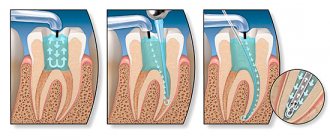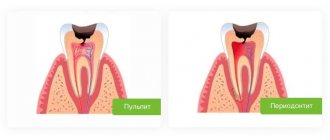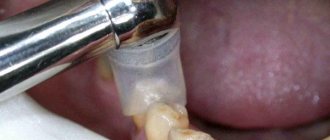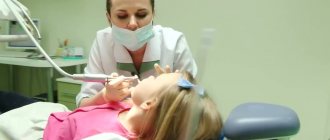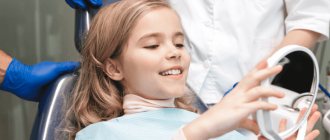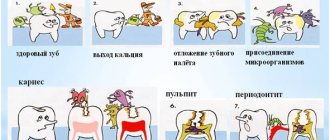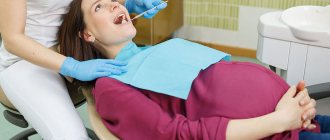From this article you will learn:
- how to properly care for your teeth,
- what is the best way to brush your teeth,
- how to protect teeth from caries.
The development of caries occurs with the participation of cariogenic bacteria in the oral cavity, which metabolize food debris stuck between the teeth after eating, turning them into lactic acid.
The acid dissolves the surface layer of tooth enamel, initially leading to the appearance of white chalky spots, which are the most initial, yet reversible, form of caries. White spots on human teeth are symptoms of the appearance of foci of demineralization of tooth enamel, in which acid has dissolved a significant part of the minerals (hydroxyapatite). If the acid attack continues for a long time, then the demineralization process reaches such a degree that the density of the enamel not only decreases, but its structural destruction occurs - a carious tooth defect is formed. The latter can be cured only by filling the tooth.
Thus, the main role in the development of caries is played by 1) microbial plaque, 2) food debris. Good regular oral hygiene can remove both of these components from teeth, but it is also important to avoid constant snacking between meals and frequent consumption of sugar-sweetened drinks. Therefore, if you are asking yourself how to get rid of tooth decay, then proper regular oral hygiene is the most important part of protecting your teeth from tooth decay and gum disease. And below we will tell you what it should be.
Important: dental care may include not only regular teeth brushing, but also additional measures that will help you strengthen your tooth enamel even more effectively. For example, the risk of developing caries can be further reduced by remineralizing teeth (we are talking about professional and home fluoridation of teeth). And we will also talk about all this in detail below.
Will floss prevent dental caries?
A recent New York Times article[] questioned the benefits of dental floss.
A 2011 study[] found that flossing in addition to brushing reduces the risk of gum disease. And not too much, since most people don’t floss their teeth thoroughly enough.
But in the fight against enamel destruction, thread is not a help at all. There is still no evidence that regular flossing reduces the risk of tooth decay.
List of measures against carious lesions
Dentists have many means to cope with caries - from gentle ones used at the very beginning to radical removal.
Fluoridation
Fluoridation of teeth
In the early stages of the disease, your doctor may recommend fluoride treatment (fluoridation). This therapy consists of applying fluoride to the enamel of teeth that are suspected or predisposed to carious lesions. It has the consistency of a gel combined with a fluoride foam solution. After hardening, the enamel takes on the appearance of being varnished. Fluoride helps dental tissue recover, strengthens the enamel layer and stops the growth of bacteria.
Teeth fluoridation procedure, before and after
By the way. The doctor can apply fluoride either directly to the teeth, or by placing it in a tray and pressing the container against the teeth. The procedure is short, takes no more than three minutes.
Individual trays for fluoridation
Sealing
This procedure is necessary if caries has penetrated deeper than the surface of the enamel. Removal of the lesion is carried out using a drill. The resulting cavity is then filled with filling material.
- Filling dental canals
Dental filling
Crown
It no longer refers to restoration, but to restorative procedures. A “cap” made to order exactly according to the measurements taken, imitating the upper part of the tooth significantly or completely destroyed by caries, is installed on the dental tissue cleaned of caries and fixed in a special way, depending on the material of the crown.
Dental crown - orthopedic design, microprosthesis
Pulp treatment
If caries has penetrated into the root canal, it is necessary to treat the pulp before installing a filling or crown. The damaged root is removed. The root canal is filled with a filling substance. Then a filling or crown is installed.
Treatment of pulpitis
Removal
The last and only option for destroying caries if it has affected all tooth tissues and roots. A forced measure that all dentists around the world reluctantly resort to, trying to preserve their patients’ teeth for as long as possible. But if this does happen, and the tooth is removed along with the root, it is necessary to install an implant or prosthesis in the empty space as soon as possible.
Tooth extraction
Photos of implants
Do I need a dental scan?
American dentists recommend having your teeth x-rayed every year. Austin Frakt, a health economist, reviewed[] medical studies and concluded that such reinsurance is unwarranted. Cavities in the tooth form more slowly—over 2–3 years.
In Russia, preventive x-rays are not so popular. But computed tomography is suggested to be done regularly. You should also not agree to this expensive service more often than once every couple of years.
Which toothpaste is more effective?
The good news is that brushing your teeth is still beneficial. But to prevent the development of caries, the paste must contain fluoride. A study of the results of dental examinations of children aged 5 to 16 years []confirmed the effectiveness of the use of this mineral for the prevention of caries and tooth loss. Moreover, it is better to brush your teeth with fluoride paste twice, not once: the positive effect will be more noticeable.
True, fluoride paste does not help against gingivitis and plaque on teeth. But it really protects against enamel destruction.
Nutrition rules
Doctors recommend limiting the consumption of sweets, replacing carbonated drinks with compote, and confectionery with dried fruits. After each meal you should rinse your mouth thoroughly.
A balanced diet must include:
- fermented milk products;
- nuts;
- fresh herbs;
- cheese;
- dietary fish varieties with low fat content;
- meat.
It is better to refrain from eating too cold or hot foods or drinks. Alternating temperatures negatively affects enamel. As a result, cracks appear, which promotes the growth of bacteria.
Which toothbrush is better
Electric toothbrushes are many times more expensive than regular ones. But it does seem to make sense in terms of plaque and gingivitis control.
Researchers compared the teeth of adults and children who used electric and regular toothbrushes. Within a month, it turned out that among representatives of the first group, plaque formation decreased by 11%, and after three months - by 21%. After a month of using electric toothbrushes, the incidence of gingivitis decreased by 6%, and after 3 months - by 11%.
Models with a rotating head cope best with plaque.
Drug prophylaxis
After an in-person examination, the dentist, according to indications, may prescribe the patient one of the following methods of medicinal endogenous prophylaxis:
- additional fluoridation of food and drinking water (the amount of fluoride is calculated only by a doctor, taking into account the dose that a person already receives from food and water);
- anti-caries drugs for oral administration (usually they contain a complex of vitamins and sodium fluoride that help strengthen teeth).
There are also exogenous methods of drug prophylaxis. These include coating the teeth with fluoride varnish or fluoride gel. Fluoride varnish stays on the enamel surface for a long time, saturates it with fluoride ions, has an antimicrobial effect, and reduces pain in cases of increased tooth sensitivity. Fluoride-containing gel has a remineralizing effect on tooth enamel; it is used for applications or electrophoresis.
Is professional teeth cleaning necessary?
Some dentists recommend polishing and grinding your teeth, or professional cleaning, twice a year. However, this procedure has a number of contraindications: allergic reactions to the medications used, enamel sensitivity, bleeding gums.
In 2005, eight studies[] were conducted on the effects of professional dental cleanings on dental health. None of them even confirmed the safety of this procedure, let alone the need to do it regularly.
Causes of the disease
The leading cause of caries is the activity of oral bacteria. The normal microflora of the mouth consists of many microorganisms. Among them there is a group of cariogenic bacteria that negatively affect the enamel. In the absence of factors that weaken the body’s defense response, the number of opportunistic microorganisms does not exceed the norm and the disease does not develop. But if there are too many bacteria, the organic acid they produce begins to gradually dissolve areas of the enamel layer. Primary prevention of caries is aimed at eliminating the causes and conditions that contribute to its occurrence.
The following factors contribute to the development of the carious process:
- disorders of mineral metabolism in the body;
- changes in the composition of saliva (increased viscosity);
- abnormal bite;
- crowded teeth;
- poor oral hygiene;
- addiction to sweet, sticky, viscous foods;
- cracks, chips of enamel;
- heredity;
- deficiency of fluorine, calcium, phosphorus in drinking water and food;
- reduced immunity.
The causes of caries are different, but the main mechanism of development is the same - lack or lack of oral hygiene. Primary prevention of dental diseases begins with regular removal of bacterial plaque, which creates a favorable environment for the proliferation of cariogenic microorganisms. This differs from secondary prevention, which consists of treating the disease and its complications.
Why do you need interdental brushes?
In 2015, a review of seven studies was published in which 354 patients brushed their teeth in three ways:
- only with a brush;
- brush and floss;
- brush and brushes.
Only once did scientists note that additional cleaning with a brush had advantages over brushing. But the evidence cannot be considered rigorous, since we are talking about a superficial study: the effect has not been analyzed in the long term. The same goes for comparing brushes and dental floss.
There is not enough data yet to draw conclusions about the benefits of brushes for interdental spaces.
How often should you visit the dentist?
In 2013, scientists analyzed[] data from medical examinations of 36,000 children. With regular preventive examinations, the likelihood of subsequent requests for treatment was indeed lower. But preventive examinations are economically justified no more than once a year.
Further research showed[] that it was not preventive examinations as such that had a positive effect, but the use of dental sealants. Dental sealants are coatings that are applied to the chewing surfaces of teeth to protect them. This procedure is most effective for children when the teeth are not yet damaged.
But sealants, when applied correctly, last from three to five years. Therefore, in this case, you can get by with fewer visits to the dentist.
Carrying out the procedure in a dental clinic
Dental treatment in a dental clinic is much more effective than at home.
Before proceeding with the manipulation, the doctor carefully cleans the dental crowns from hard stone and soft plaque. Due to this, the fluoridated gel adheres better to the enamel and penetrates into its deeper layers. Afterwards, the work area is isolated from saliva. This is very important and a person is not able to do this on his own. The dentist then uses fluoride varnish. He carefully distributes it over all surfaces, making sure that not a single area is left untouched. Until the solution dries, the person sits with his mouth open.
An experienced dentist knows exactly how much varnish to use and how to apply it correctly. Therefore, the patient does not risk anything. He can be confident in the effectiveness of the therapy.


